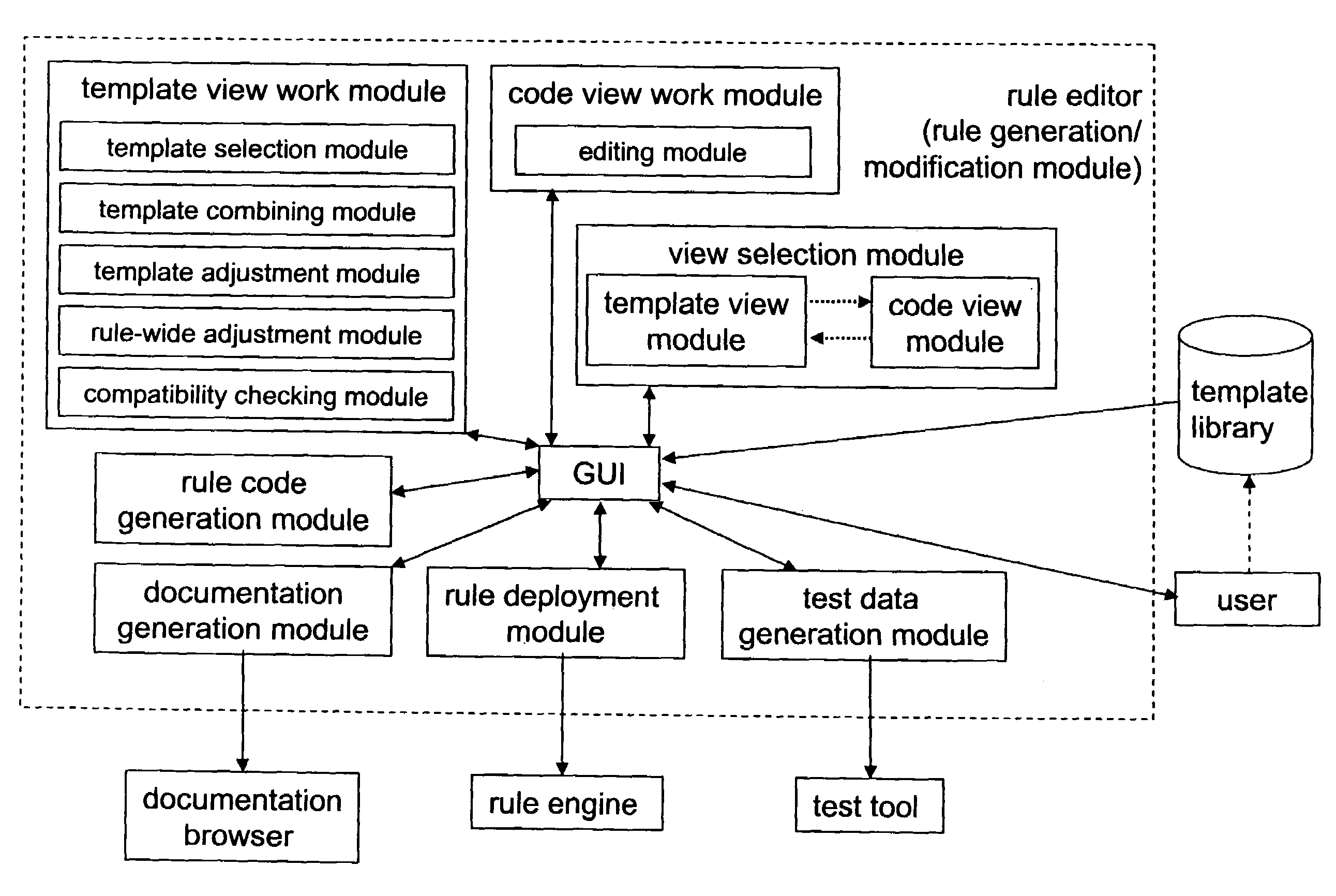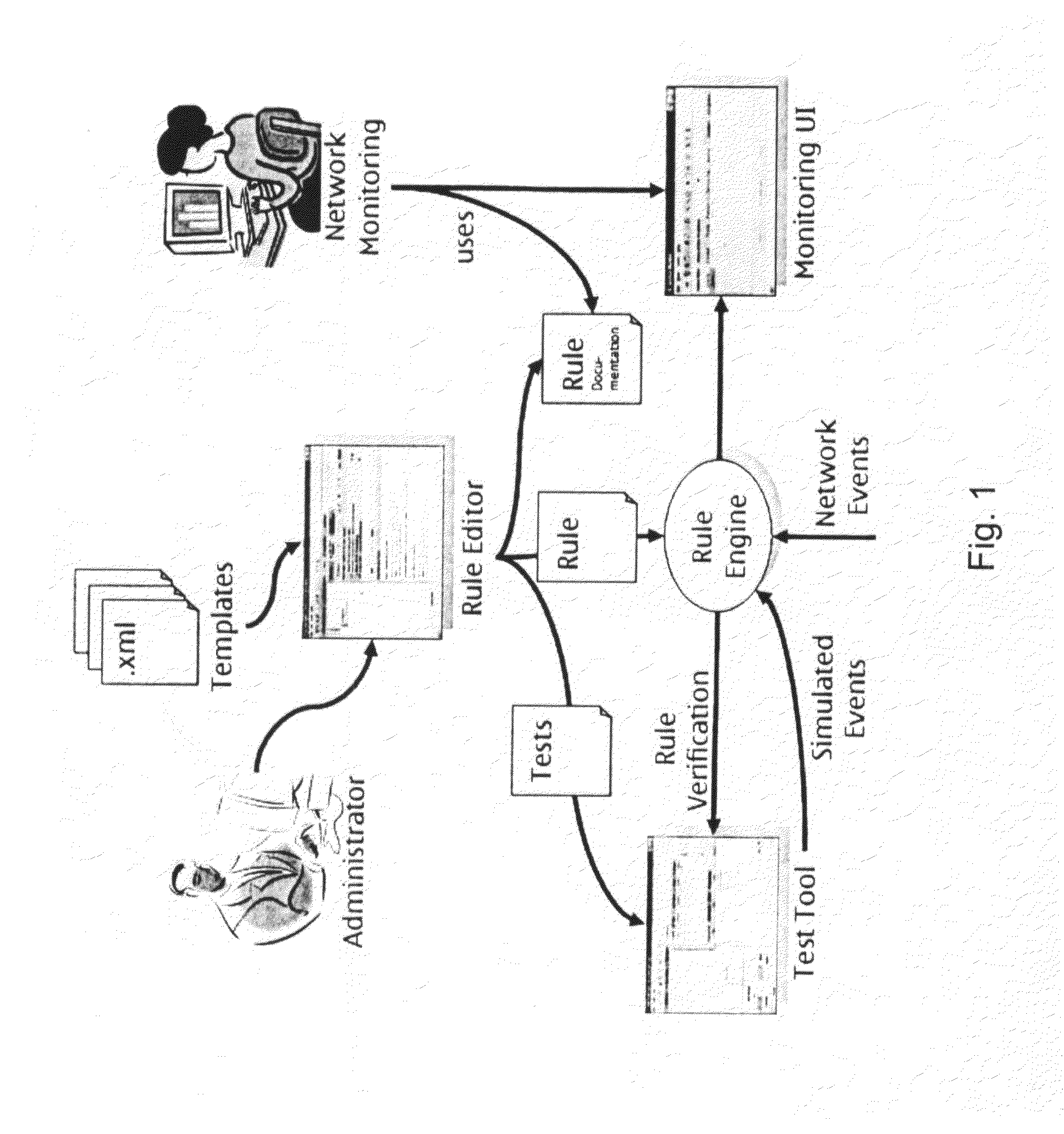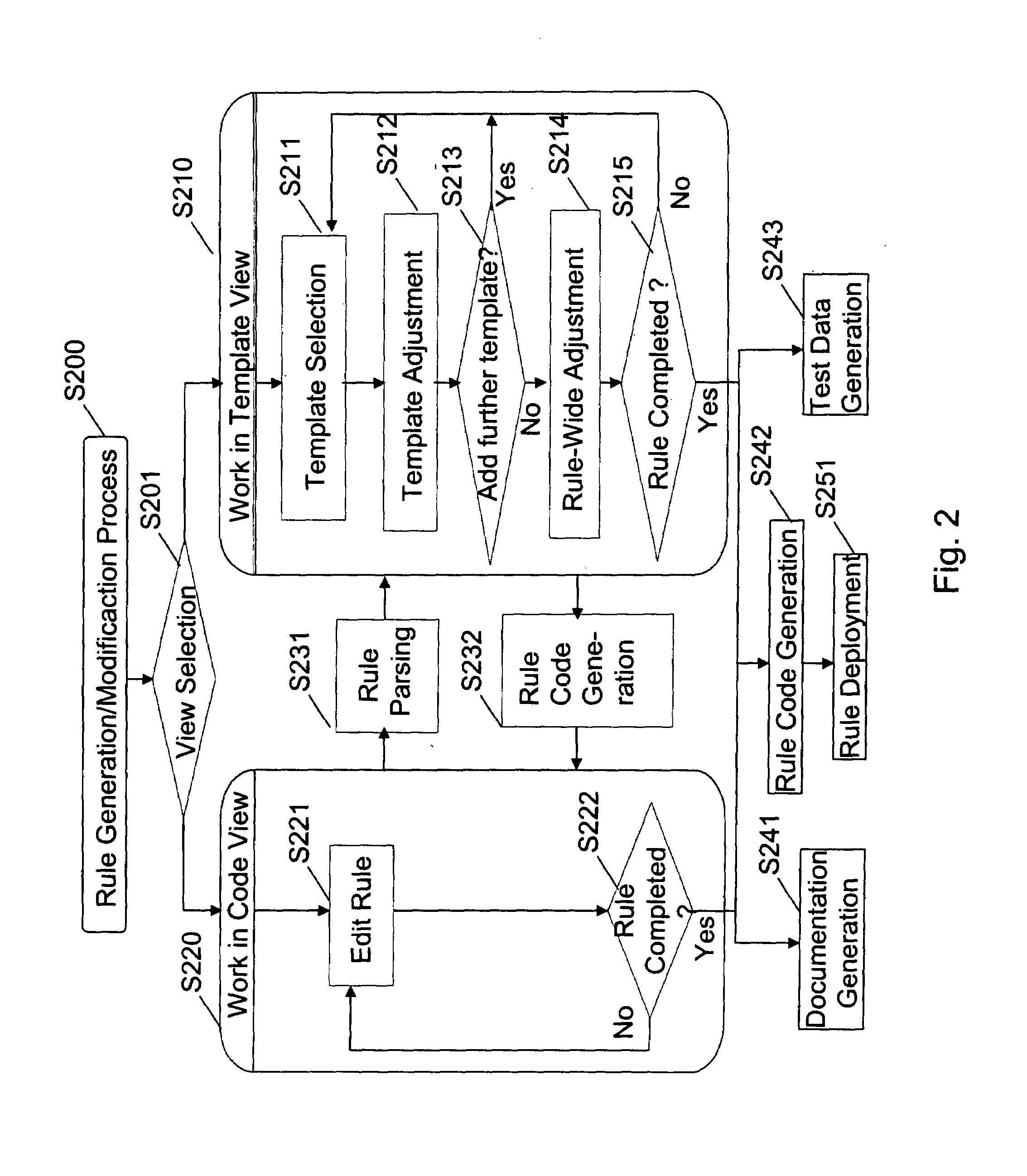Template-based rule generation
a template-based, rule-generation technology, applied in the field of template-based rule generation, can solve the problems of increasing the complexity of the implementation of the rule, the cumbersome procedure to be carried out by skilled personnel, and the complexity of the rule becomes more complex, so as to achieve the effect of improving the solution of the rule generation
- Summary
- Abstract
- Description
- Claims
- Application Information
AI Technical Summary
Benefits of technology
Problems solved by technology
Method used
Image
Examples
Embodiment Construction
)
[0047]The present invention is described herein with reference to particular non-limiting examples. A person skilled in the art will appreciate that the invention is not limited to these examples, and may be more broadly applied.
[0048]In particular, the present invention is mainly described within the field of network operation support systems (network management), and especially the area of network monitoring. Thus, the description mainly refers to a rule-based network monitoring system. As such, the description of the present invention and its embodiments given herein specifically refers to terminology which is directly related to such a network monitoring system. Such terminology is only used in the context of the presented examples, and does not limit the invention in any way. Rather, the present invention and its embodiments are applicable to any kind of rule-based system, in particular to any kind of rule-based monitoring system including network monitoring, service monitorin...
PUM
 Login to View More
Login to View More Abstract
Description
Claims
Application Information
 Login to View More
Login to View More - R&D
- Intellectual Property
- Life Sciences
- Materials
- Tech Scout
- Unparalleled Data Quality
- Higher Quality Content
- 60% Fewer Hallucinations
Browse by: Latest US Patents, China's latest patents, Technical Efficacy Thesaurus, Application Domain, Technology Topic, Popular Technical Reports.
© 2025 PatSnap. All rights reserved.Legal|Privacy policy|Modern Slavery Act Transparency Statement|Sitemap|About US| Contact US: help@patsnap.com



